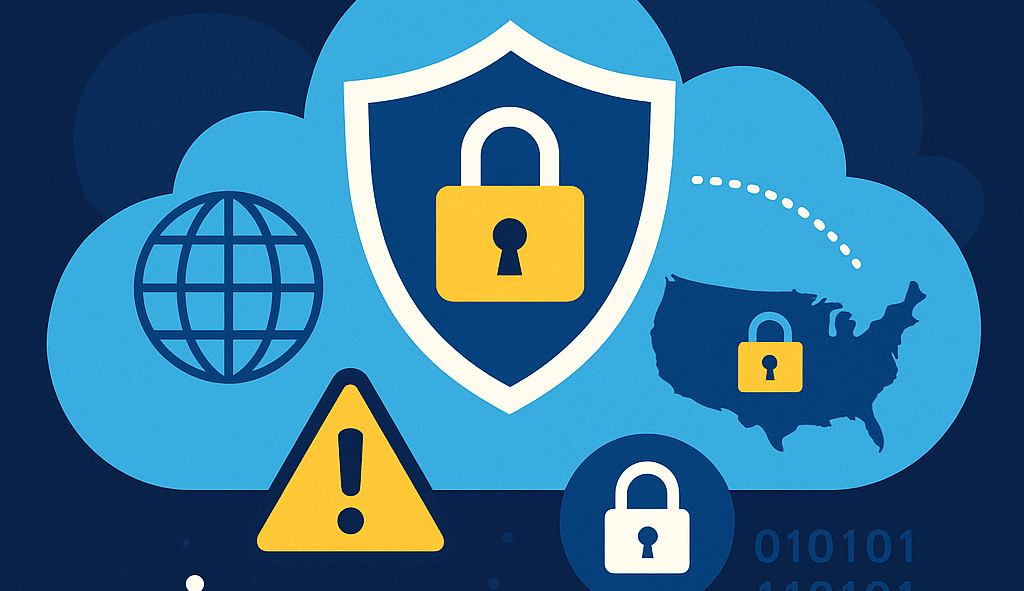The Cloud Act and Cybersecurity: What Companies Must Know
The Cloud Act gives U.S. authorities the right to access data stored by American cloud providers, even when servers are located in Europe. This article explains the cybersecurity risks, the challenges to data sovereignty, and the hidden costs of cloud services compared to on-premise infrastructures.
ARTICLES
j,kassegne
9/2/20252 min read


The Cloud Act and Cybersecurity
I)What is the Cloud Act?
The Cloud Act (Clarifying Lawful Overseas Use of Data Act), passed in 2018 in the United States, gives U.S. authorities the power to request access to data stored by American companies even if that data is physically located outside U.S. territory.
This means that if a European business hosts its files in a Microsoft Azure data center in Germany or on Amazon servers in France, those files could still be legally accessed by U.S. authorities as part of an investigation.
The Cloud Act therefore raises a key issue: data sovereignty. It challenges the assumption that storing data locally guarantees legal protection.
A Realistic Example:
When Control Slips Away
Picture a small healthcare technology company in Europe.
To optimize costs and scalability, the company migrates its infrastructure to a U.S.-based cloud provider.
Months later, U.S. authorities launch an unrelated investigation and demand data access from that same provider.
The company in Europe is not consulted, has no power to oppose the request, and may not even be informed immediately.
In this situation:
Sensitive information leaves the company’s control.
The belief that “our servers are in Europe, therefore we’re safe” turns out to be misleading.
The organization faces a silent risk: its intellectual property and confidential data may be accessed under foreign laws.
II)The Potential Consequences of the Cloud Act
Without openly criticizing the law, we can underline its consequences:
Loss of sovereignty: businesses can no longer guarantee their data remains under local jurisdiction.
Competitive risks: sensitive or strategic data could indirectly end up exposed.
Lack of transparency: clients are not always informed when their data is handed over.
Why On-Premise Still Matters
This is why on-premise infrastructures remain valuable, especially for sensitive industries (finance, healthcare, government, research).
Companies retain full control of their servers and access.
No foreign jurisdiction can quietly acquire information.
The chain of custody for sensitive data is clearer and more secure.
While on-premise comes with heavier responsibilities hardware costs, physical security, maintenance the trade-off is greater independence.
The Economic Perspective: Is Cloud Really Cheaper?
At first glance, the cloud is marketed as the cheaper, more flexible option. Businesses see predictable monthly bills instead of upfront hardware investments.
But here’s the reality:
On-premise infrastructures have higher initial costs (servers, racks, energy, cooling), but these costs are often long-term investments.
Cloud subscriptions, on the other hand, resemble a perpetual lease you pay indefinitely, with costs that grow as your data and usage expand.
Electricity bills for running servers are real, yes, but they can sometimes be comparable to, or even lower than, the long-term recurring cloud subscription fees and in a place like Canada for example, the electric fees are lower than Europe.
In other words, while cloud services appear to be the “lesser cost” solution, in many cases, over several years, the financial weight of the subscription model can surpass the expense of running on-premise infrastructure.
Conclusion
The Cloud Act highlights a modern dilemma: embrace the flexibility of the cloud or preserve sovereignty and long-term economic control through on-premise systems.
Cloud computing: flexible, scalable, and marketed as cost-effective but tied to risks of foreign jurisdiction and hidden long-term costs.
👉 On-premise: more demanding upfront, but offers greater independence, legal protection, and sometimes even more predictable costs in the long run.
Ultimately, businesses must evaluate their own context. But one point is clear: the “cheaper” option is not always the one that truly costs less whether in money, sovereignty, or security.
